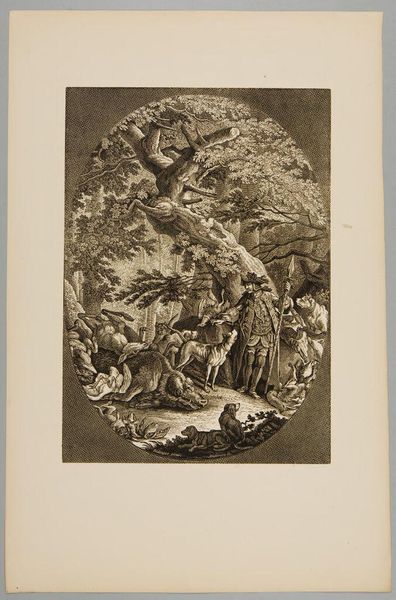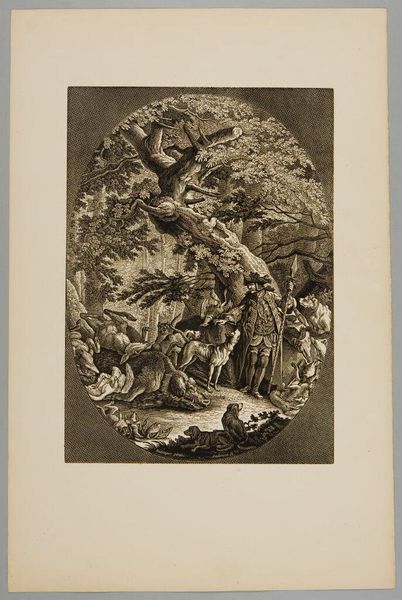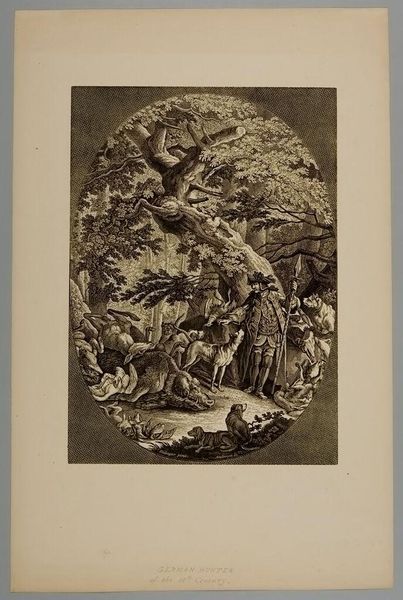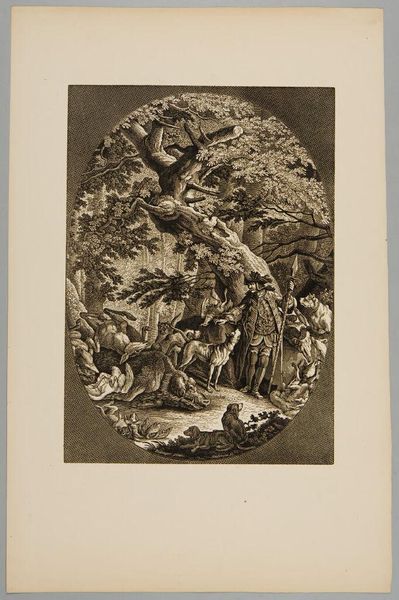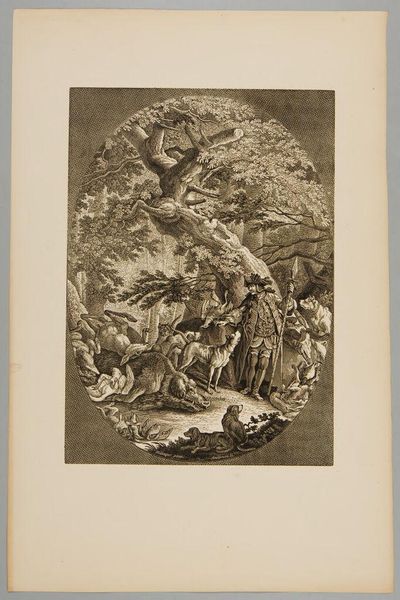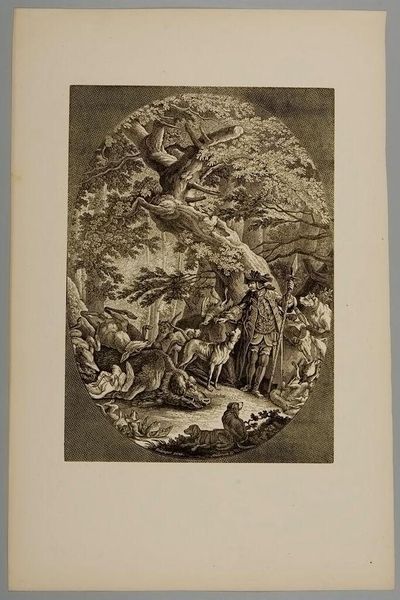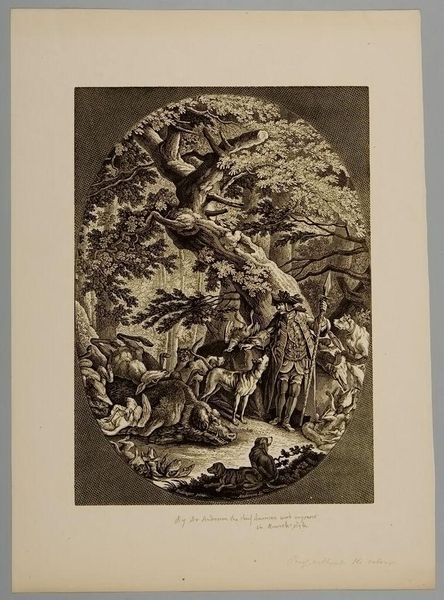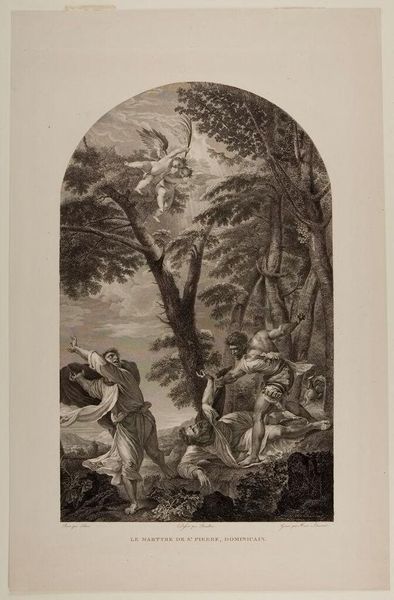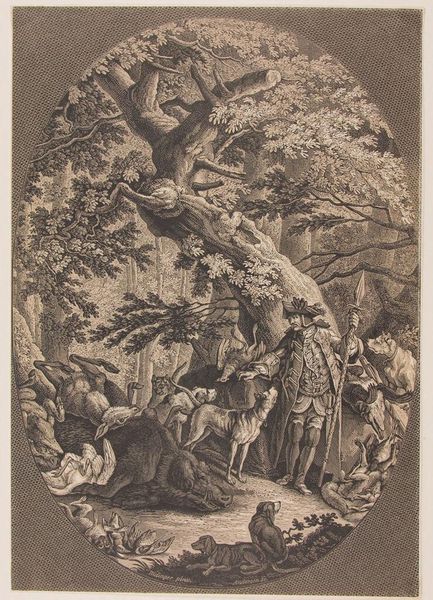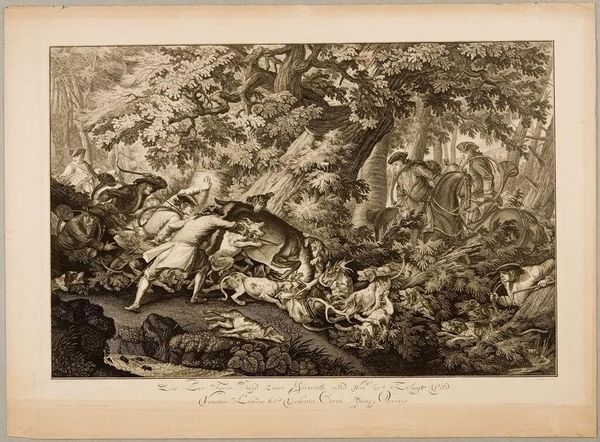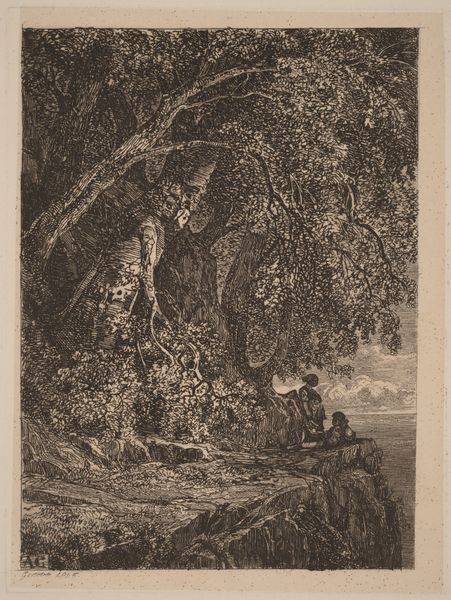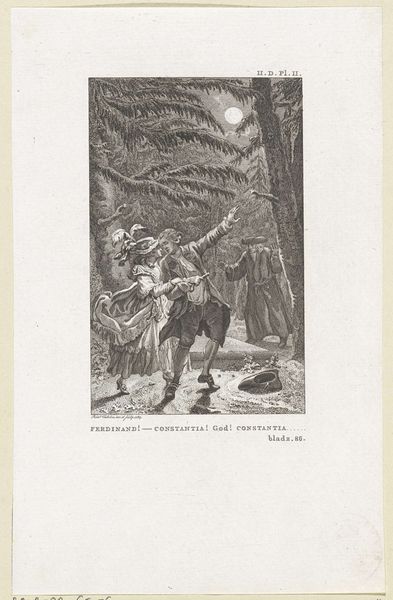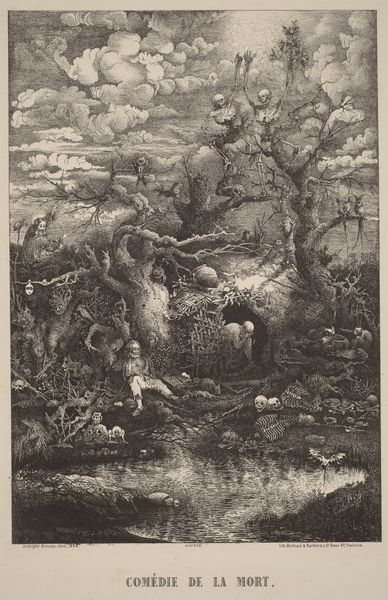
Copyright: CC0 1.0
Curator: This is Alexander Anderson's "Returning from a Boar Hunt," held here at the Harvard Art Museums. Editor: It has an archaic feel, a pastoral scene of man and beast within an oval frame. Curator: Anderson, born in 1775, was a pioneer of wood engraving in America, mastering a technique that allowed for finer detail and larger print runs compared to traditional copperplate engraving. Editor: The boar itself, central and supine, serves as a potent symbol of nature's subjugation. Notice the hunter's spear, a direct assertion of dominance. Curator: Indeed, but the engraving also speaks to the commercialization of art. Anderson's prints were more accessible, reaching a wider audience. The labor involved, the multiple impressions—it democratized imagery. Editor: Yet the scene still resonates with classicism. The dogs, the hunter, the fallen tree—they echo age-old narratives of man's relationship with the natural world, rendered in miniature. Curator: The wood itself is part of that relationship. Anderson’s choice of material is so important to understanding his artistic goals. Editor: It’s interesting to consider how those layers of meaning add to this single image. Curator: Indeed. The print invites us to explore these historical connections.
Comments
No comments
Be the first to comment and join the conversation on the ultimate creative platform.
